Templo do Cavalo Branco, Luoyang - Bilhete, horário de funcionamento, localização e destaques
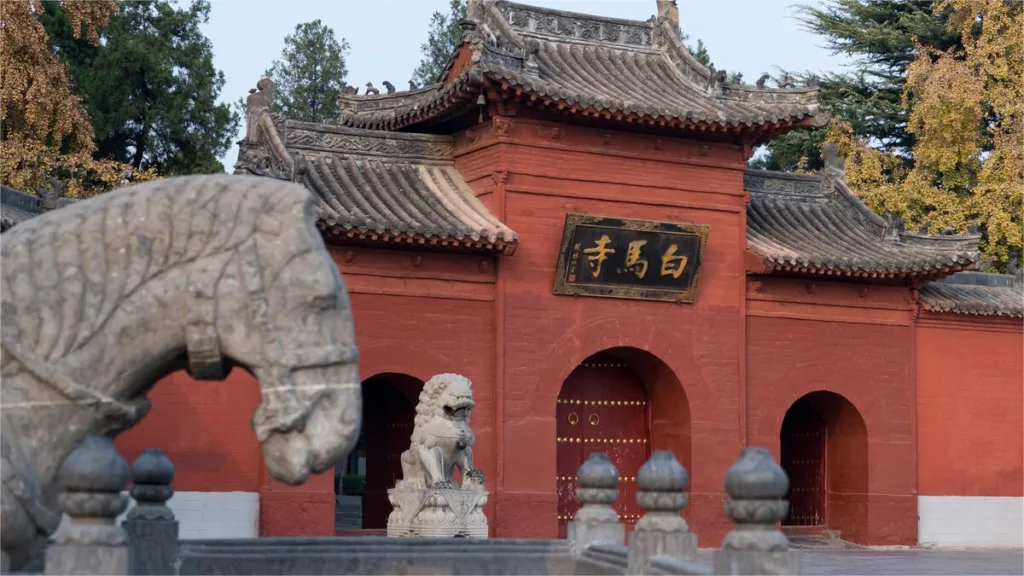
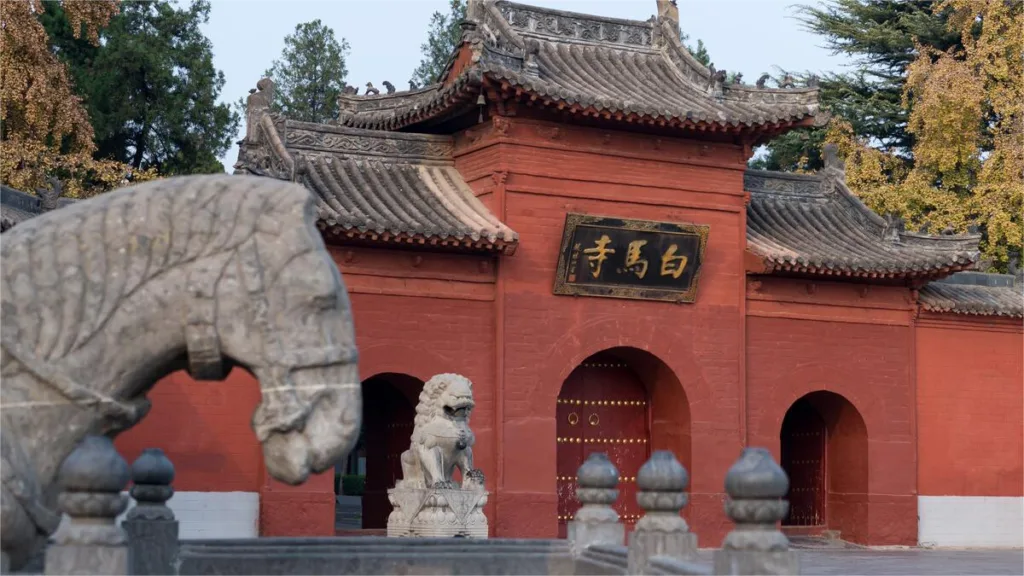
White Horse Temple (白马寺), founded in the eleventh year of the Yongping era of the Eastern Han Dynasty (68 AD), holds the distinction of being the first official Buddhist temple established after Buddhism was introduced to China, making it a significant landmark in the history of Buddhism not only in China but also in countries like Vietnam, Korea, Japan, and Western nations.
The temple played a crucial role in the spread of Buddhism throughout East Asia and even to Southeast Asia, contributing to its widespread popularity in the region. Over time, Buddhism reached Europe and the Americas, solidifying White Horse Temple’s status as a revered pilgrimage site for Buddhists worldwide. In recognition of its historical significance, various countries have contributed to the restoration and development of the temple. Japan, for instance, funded the renovation of the temple’s bell tower and erected a statue of Kukai, while governments from Thailand, India, and Myanmar have supported the construction of Buddhist halls, making it an internationally recognized center of Buddhist culture.
White Horse Temple houses valuable relics, including two relics of Shakyamuni Buddha, ancient Chinese Buddha statues, and statues of the Eighteen Arhats from the Yuan Dynasty. The annual “White Horse Temple Bell Ringing” event symbolizes blessings and the transition to a new year, attracting numerous foreign visitors seeking spiritual experiences and cultural insights.
Índice
- Informações básicas
- Localização e transporte
- Highlights of White Horse Temple
- Vlog about White Horse Temple
- Other Temples in Luoyang
- Attractions near White Horse Temple
Informações básicas
| Duração estimada da excursão | 2 horas |
| Preço do bilhete | 35 RMB |
| Horário de funcionamento | 7.40 – 18.40 (18th March – 7th October) 8.00 – 17.30 (8th October – 17th March) |
| Número de telefone | 0086-0379-63781065 0086-0379-63789090 |
Localização e transporte
White Horse Temple is located at No. 6 Luobai Road, Bai Ma Si Town, Chanhe District, Luoyang, Henan Province, in the northeastern part of the city. To get there, you can take metro line 1, transfer to bus 802 at Yangwan Station (杨湾站), and get off at Shiyuan Square Baimasi Stop (释源广场白马寺站).
Highlights of White Horse Temple
Traditional Chinese Buddhist Builddings
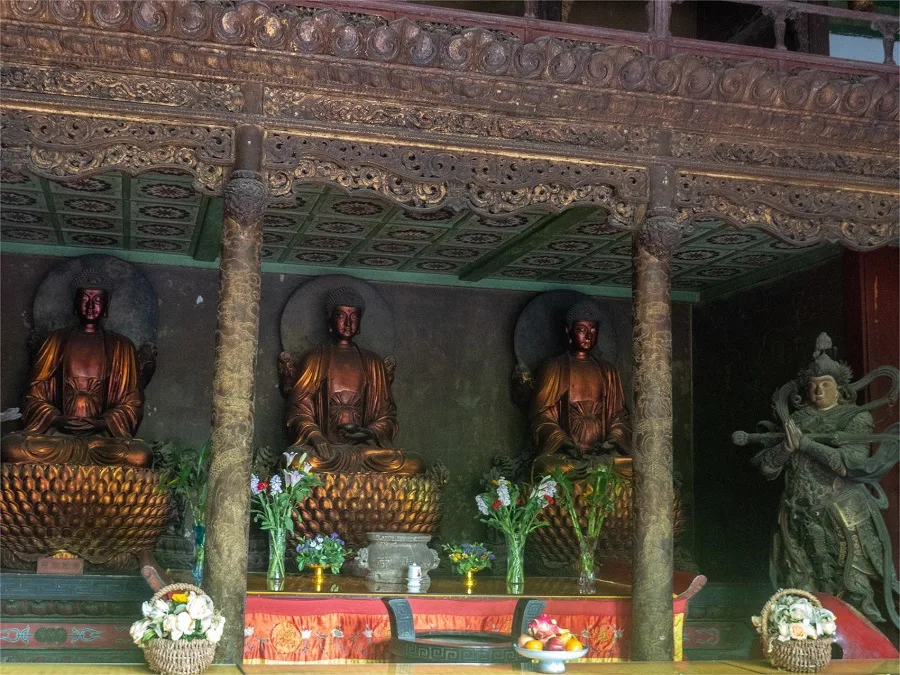
White Horse Temple, one of China’s most significant Buddhist sites, boasts a rich array of architectural highlights that reflect the evolution of Buddhist architecture over the centuries. The temple’s main axis, from south to north, is lined with several key buildings:
Mountain Gate (Shanmen): Serving as the entrance to the temple complex, the Shanmen is a grand structure characterized by its high platform and gabled roof. It symbolizes the transition from the mundane world to the sacred realm of Buddhism.
Heavenly Kings Hall (Tianwang Dian): This hall, rebuilt during the Ming Dynasty, features a raised platform and a double-eave hip-and-gable roof. Inside, visitors can admire a gilded Buddha niche brought from the Forbidden City, along with statues of Maitreya Bodhisattva and the Four Heavenly Kings.
Great Buddha Hall (Dafo Dian): Initially constructed during the Yuan Dynasty and later rebuilt during the Ming Dynasty, the Great Buddha Hall is a significant venue for Buddhist ceremonies and rituals. It houses statues of Shakyamuni Buddha, Manjushri Bodhisattva, and Samantabhadra Bodhisattva, among others.

Mahavira Hall (Daxiong Dian): Originating from the Tang and Song Dynasties and rebuilt during the Yuan and Ming Dynasties, this hall is known for its raised platform and suspended roof. Inside, visitors can marvel at statues of the Three Buddhas (Shakyamuni, Amitabha, and Bhaisajyaguru), as well as various celestial beings and the Eighteen Arhats.
Hall of Four Heavenly Kings (Jieyin Dian): Originally constructed during the Ming Dynasty and later rebuilt in the Qing Dynasty, this hall was dedicated to the Four Heavenly Kings. It was rebuilt following a fire in the late Qing Dynasty and now houses statues of Amitabha Buddha, Avalokitesvara Bodhisattva, and Mahasthamaprapta Bodhisattva.
Cooling Terrace (Qingliang Tai): Located at the rear of the temple complex, the Cooling Terrace is a massive brick platform that provides a panoramic view of the surrounding area. Its imposing presence adds to the grandeur of the temple complex.
Vairocana Pavilion (Pilu Ge): Standing tall on the Cooling Terrace, the Vairocana Pavilion is the final grand hall of White Horse Temple. It features a double-eave hip-and-gable roof and houses statues of Vairocana Buddha, Manjushri Bodhisattva, and Samantabhadra Bodhisattva.
Qiyun Pagoda Courtyard

Located 200 meters southeast of the Mountain Gate of White Horse Temple, Qiyun Pagoda Courtyard is a unique Buddhist nunnery in Henan Province. The main structure within the courtyard is the Qiyun Pagoda, originally built during the reign of Emperor Ming of the Eastern Han Dynasty. Initially known as the “Stupa of Sakyamuni’s Relics,” it underwent several rebuildings due to warfare, with its current form dating back to the Jin Dynasty in 1175. The pagoda, constructed with brick in a compact multi-eave style, stands 13 stories tall, reaching approximately 25 meters in height. It is one of the earliest surviving ground-level Jin Dynasty structures in the Luoyang area.
During the Qing Dynasty, the abbess Ru Xiu of White Horse Temple, based on records of Emperor Ming’s establishment of the stupa, renamed it “Qiyun Pagoda.” After the founding of the People’s Republic of China, the Luoyang Municipal People’s Government undertook protective measures for the pagoda, culminating in the establishment of the Qiyun Pagoda Courtyard in 1990, covering an area of 15 acres.
The layout of the courtyard is rectangular, with structures distributed along a central axis from south to north. Along this axis, visitors encounter the Mountain Gate, the Release Pond, a stone arch bridge, and the Qiyun Pagoda. Adjacent buildings on the east and west sides of the pagoda include the following: on the west side, there are three halls for Buddhist chanting and three dining halls, while on the east side, there are three guest halls and three classrooms for training sessions. Additionally, meditation rooms are available within the complex.
Thai Buddhist Temple
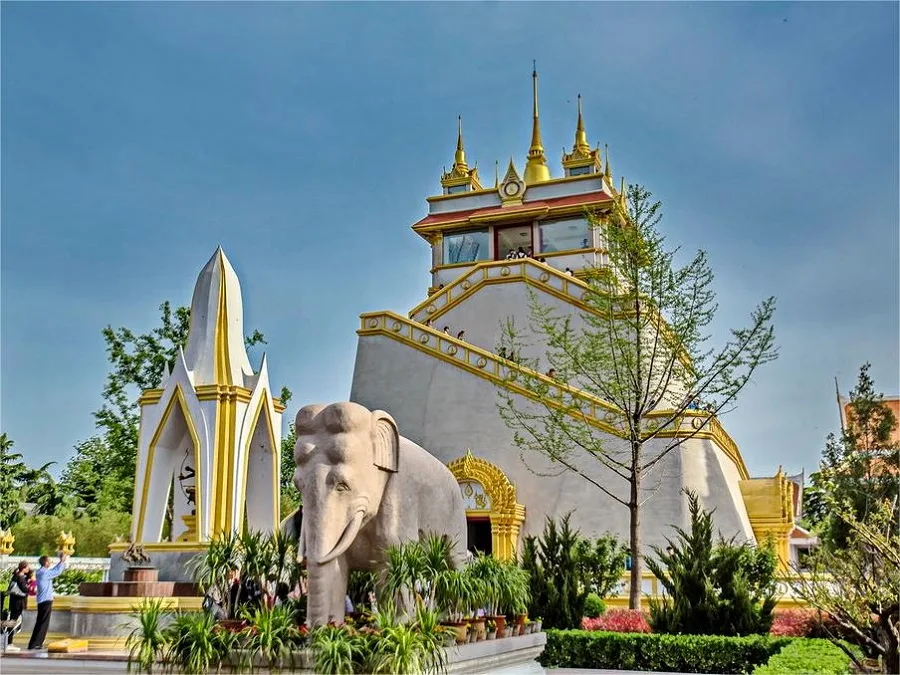
In 1992, Mr. Watana Asavahame, a devout Buddhist from Thailand, visited White Horse Temple and presented a 7.2-meter-tall, 8-ton golden bronze Buddha statue as a symbol of friendship between the Buddhist communities of China and Thailand. Following this gesture, Mr. Asavahame generously contributed to the construction of a Thai-style Buddhist temple within the precincts of White Horse Temple, a project completed in 1995. This enclave, known as the Thai Buddhist Temple Garden, spans 108 meters in both length and width, featuring four ornate gates – one each to the east, west, south, and north – with the eastern gate serving as the main entrance.
The garden is home to several prominent structures, including a stupa (reliquary tower), a Four-Faced Buddha statue, a large Buddha hall, a museum, a bell tower, and pavilions. These buildings are meticulously arranged and offer a harmonious blend of architectural styles. The stupa houses relics of Sakyamuni Buddha, discovered by British archaeologists in 1898. These relics were gifted to the Thai King Rama V by India in 1899 and were enshrined in the Golden Mount Stupa at Wat Saket in Bangkok for over a century. In 2014, a grand ceremony was held to welcome the relics to White Horse Temple, where they now rest within the stupa.
Indian-style Buddhist temple

On June 25, 2003, Indian Prime Minister Atal Bihari Vajpayee paid a visit to White Horse Temple in Luoyang, where he devoutly worshipped at the sacred mound of two renowned Indian monks, Shemoteng and Zhufalan. During this visit, he was inspired to propose the construction of an Indian-style Buddhist temple within the precincts of White Horse Temple.
The Indian Buddhist Temple Garden covers an area of 6,000 square meters with a total building area of 3,450 square meters. Its layout comprises the main hall, corridors, and archways, showcasing meticulous planning and artistic ingenuity. The main hall, modeled after the famous Buddhist site Sanchi Stupa in India, houses a statue depicting the Buddha delivering his first sermon at Deer Park—expounding the Four Noble Truths and the Noble Eightfold Path to his first five disciples. The hall’s roof features glass skylights that allow sunlight to illuminate the Buddha statue below, creating a serene ambiance. Carvings depicting the life stories and previous incarnations of the Buddha adorn the upper and lower levels of the hall, as well as the archways at the entrance. Additionally, water features are incorporated into the design of the lower part of the hall.
The Indian Buddhist Temple Garden boasts a symmetrical and structured layout, centered around a massive domed canopy resembling an inverted alms bowl. Water flows beneath the temple, creating a continuous, tranquil fountain. Surrounding the main hall, the corridors provide a serene and orderly ambience. As a Buddhist architectural masterpiece in the classical Indian style, standing alongside traditional Chinese Buddhist temples, the Indian Buddhist Temple Garden serves as a symbol of the enduring friendship between the peoples of China and India across generations.
Myanmar Pagoda Garden

The Myanmar Pagoda Garden at White Horse Temple in Luoyang was constructed with funding from the Myanmar government. The project commenced in 2012 with the laying of the foundation stone and was completed in June 2014. Adjacent to the Thai Buddhist Temple Garden, this garden exhibits a majestic layout, featuring a towering pagoda with exquisite carvings and well-manicured courtyards adorned with lush greenery.
The garden, designed to mimic the architectural style of the Mandalay Royal Palace, spans 108 meters in length from north to south and 65 meters in width from east to west, covering a total area of 7,020 square meters. The main entrance to the garden is located at the east gate.
At the heart of the garden stands the Myanmar Great Golden Pagoda, modeled after the Shwedagon Pagoda in Yangon but scaled down in size, standing at a height of 32.92 meters. Within the pagoda, four statues of Sakyamuni Buddha are enshrined, each depicting a different aspect of his life: enlightenment, preaching, giving, and meditation. Surrounding the walls of the hall are four large jade carvings portraying the four significant events in Buddha’s life: birth, enlightenment, preaching, and nirvana. Additionally, eight smaller jade carvings showcase famous pagodas and Buddha statues from Myanmar.
In the northeast corner of the garden, there is a statue of a dragon king protecting the Buddha, while in the northwest corner stands the Wind-Moved Stone Pagoda. A small Buddha hall is also situated in the southeast corner of the garden, completing the serene ambiance of the Myanmar Pagoda Garden.
Vlog about White Horse Temple
Other Temples in Luoyang

Templo de Xiangshan
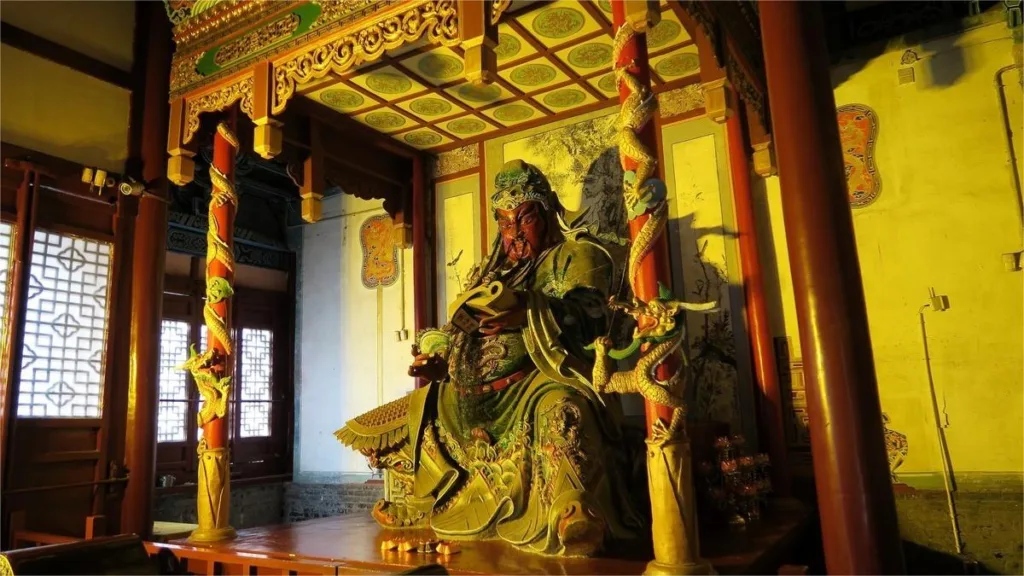
Guanlin Temple
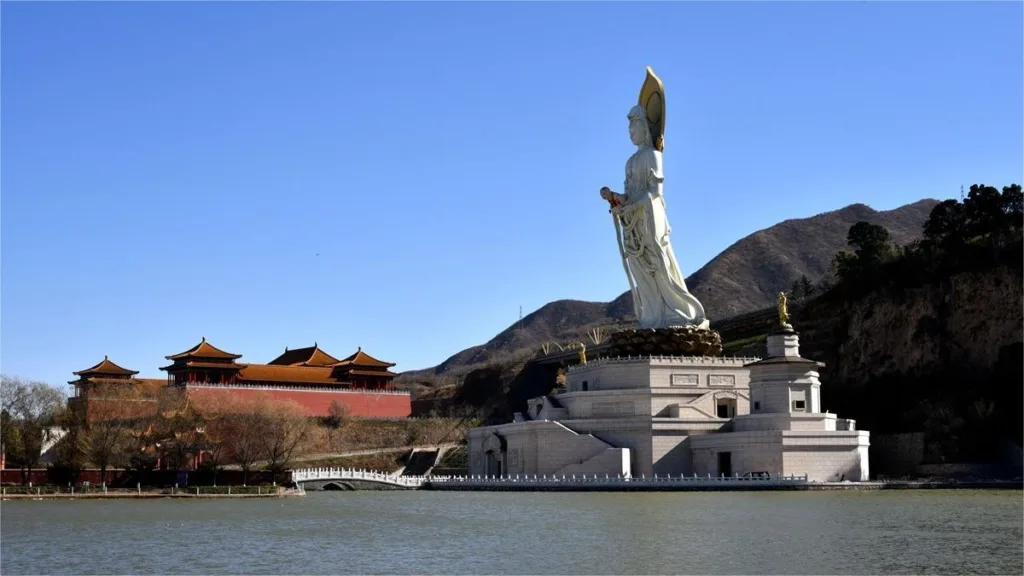
Lingshan Temple
Attractions near White Horse Temple

Jardim de Peónias de Shenzhou
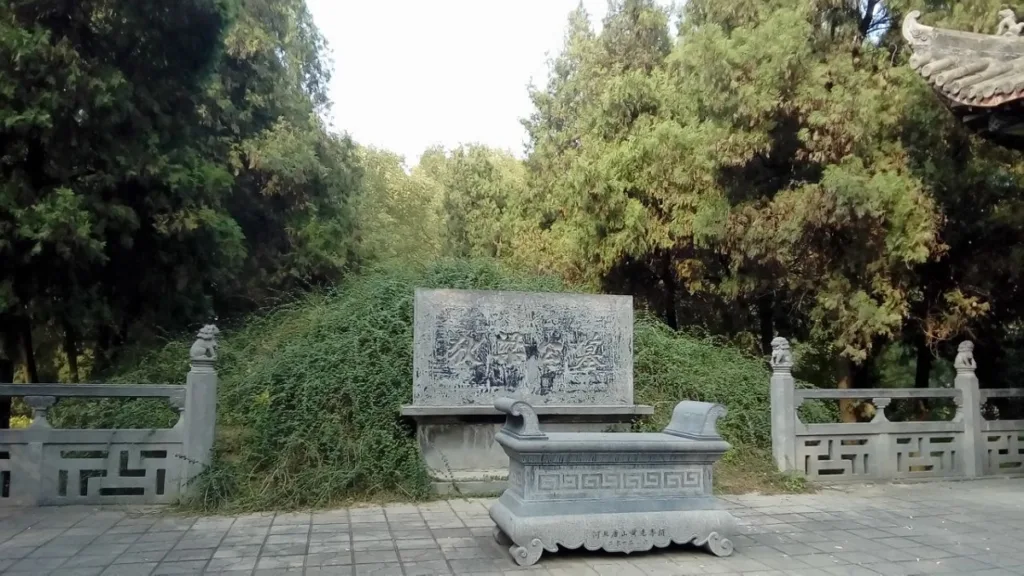
Tomb of Di Renjie
Locais históricos de Henan, Atracções de Luoyang